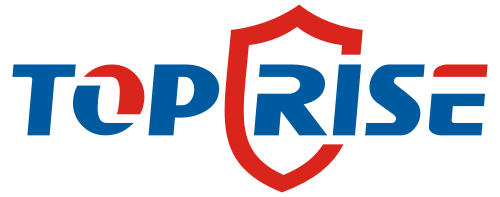In factories, workers face high levels of noise daily. To protect hearing, factories use safety earmuffs and earplugs. Both provide essential protection, but they differ in effectiveness and comfort. The Noise Reduction Rating (NRR) is a key factor in choosing between safety earmuffs and earplugs. This blog explores the NRR of safety earmuffs and earplugs produced in factories across China.
What is NRR?
The NRR measures how much noise protection a hearing device provides. A higher NRR means greater protection. Factories must select hearing protection based on their noise environment and safety standards. Safety earmuffs and earplugs are commonly used, but each has different advantages and limitations when it comes to NRR.
Safety Earmuffs vs. Earplugs
Safety earmuffs are larger and cover the entire ear. They provide a higher NRR compared to earplugs in many cases. Foam earplugs and silicone earplugs, while more discreet, may not offer the same level of protection in louder environments.
Safety Earmuffs
Safety earmuffs are often preferred in noisy factory settings. They come with padded earcups and a band that rests over the head. These earmuffs reduce noise through both passive and active means. The earmuffs noise canceling technology is essential in environments with consistent, loud noises. Safety earmuffs factories in China often produce these devices to meet international standards such as EN 352-1, AS/NZS 1270 and ANSI S3.19-1974.
Safety earmuffs usually have a higher NRR, ranging from 20 to 30 dB. This makes them effective at blocking out high-frequency noises typical in manufacturing environments. In environments where noise exceeds 85 dB, earmuffs with a high NRR are crucial for long-term hearing protection.
Foam Earplugs
Foam earplugs are popular in Chinese factories due to their comfort and affordability. These earplugs are soft, expandable, and fit snugly in the ear canal. Foam earplugs offer an NRR of 20 to 30 dB, depending on their size and fit. They are more discreet than earmuffs but provide less protection in extreme noise conditions.
Foam earplugs are more comfortable for some workers, especially those who work long shifts. They are easy to use and can be worn for hours without discomfort. However, foam earplugs are less effective in blocking low-frequency noises compared to earmuffs.
Silicone Earplugs
Silicone earplugs are another common option. They are soft, durable, and reusable. While their NRR is generally lower than foam earplugs, silicone earplugs still provide adequate protection in moderate noise environments. These earplugs offer an NRR of around 20 to 25 dB. Workers who need to hear some surrounding sounds for safety may prefer silicone earplugs due to their moderate noise reduction.
Silicone earplugs are also more durable and easy to clean compared to foam earplugs. However, they may not provide the same level of comfort for extended use, especially in high-noise environments.
Safety Standards and Certification
In China, factories must follow international safety standards to ensure that hearing protection devices meet the necessary criteria. The following safety standards are crucial in assessing the NRR of safety earmuffs and earplugs:
EN 352-1: This European standard applies to hearing protectors, particularly earmuffs. It outlines the requirements for noise reduction, fit, and comfort.
AS/NZS 1270, Class 5 or Class 4: This Australian/New Zealand standard sets the minimum NRR required for various levels of noise exposure. Class 5 offers the highest level of protection.
ANSI S3.19-1974: The American National Standards Institute (ANSI) standard provides testing methods for the performance of hearing protection devices.
Factories in China often produce safety earmuffs and earplugs that meet these standards. Devices that meet EN 352-1, AS/NZS 1270, and ANSI S3.19-1974 offer reliable protection, ensuring workers’ hearing remains safe despite prolonged exposure to loud noises.
Which is Better: Earmuffs or Earplugs?
The decision between safety earmuffs and earplugs depends on the noise levels and the specific needs of the factory. In extremely noisy environments, safety earmuffs offer better protection due to their higher NRR. They are particularly effective at blocking out high-frequency noise, which is common in factories with heavy machinery.
On the other hand, earplugs can be a good option for environments with moderate noise levels. Foam earplugs and silicone earplugs provide sufficient protection for most factory settings while being more comfortable for workers who need to wear them for long periods. Earplugs are also more portable and less bulky than earmuffs.
Comfort and Convenience
When selecting between safety earmuffs and earplugs, comfort is an important factor. Workers who are required to wear hearing protection for several hours may prefer earplugs for their lightness and comfort. Foam earplugs, in particular, mold to the shape of the ear canal, offering a snug and comfortable fit. However, some workers may find earplugs uncomfortable if they are worn for extended periods.
Safety earmuffs, while providing more protection, can become uncomfortable during long shifts, especially if the fit is not ideal. Some workers may also find earmuffs bulky, which can be a disadvantage in tight or confined spaces.
Conclusion
Safety earmuffs and earplugs are both vital for protecting workers from noise-induced hearing loss. Safety earmuffs typically offer a higher NRR and are ideal for very noisy environments, particularly in heavy manufacturing sectors. On the other hand, foam earplugs and silicone earplugs are comfortable and affordable alternatives that still provide effective noise reduction for moderate noise levels.
Factories must adhere to international safety standards such as EN 352-1, AS/NZS 1270, and ANSI S3.19-1974 when selecting hearing protection. By choosing the right safety earmuffs or earplugs based on the NRR and comfort, factories can ensure their workers are well-protected from harmful noise exposure. Ultimately, the best choice depends on the specific noise levels and needs of the factory and its workers.


